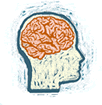 Overview. The Brain-Targeted Teaching Model provides teachers and industry trainers with a format for using research in the neurosciences as well as research-based effective instructional practices to guide them in planning, implementing, and assessing a sound program of instruction. The model presents six stages, or “brain targets” of the teaching and learning process and describes brain research that supports each stage. Overview. The Brain-Targeted Teaching Model provides teachers and industry trainers with a format for using research in the neurosciences as well as research-based effective instructional practices to guide them in planning, implementing, and assessing a sound program of instruction. The model presents six stages, or “brain targets” of the teaching and learning process and describes brain research that supports each stage.While each brain target is presented separately, the components are interrelated. For example, Brain Target One describes the importance of establishing a positive emotional climate to foster high levels of learning. Clearly, the strategies that a teacher identifies for Brain Target One can be applied throughout the entire model. At the same time, evaluating learning, Brain Target Six, is an integral part of each component or target of the model. The Brain-Targeted Teaching Model focuses on positive emotional and physical learning environments, the development of “big picture” concepts, the mastery of skills and process, the “real world” application of learning, and the continual evaluation of student learning. Integral to the application of the model is the integration of the arts to foster concept development and higher-order thinking. |
 Brain Target 1: Emotional Climate Brain Target 1: Emotional ClimateBrain research supports the notion that a positive emotional climate paves the way for higher levels of learning and performance. Creating a positive learning environment and eliminating factors that cause stress are essential components of a teacher's instructional program. |
 Brain Target 2: Physical Environment Brain Target 2: Physical EnvironmentThe classroom and training environment can be a powerful tool for focusing students' attention and offering them a secure and supportive learning experience. Novelty in the environment can foster attention and factors such as lighting, sound, and scents can enhance the learning experience for learners. |
 Brain Target 3: Learning Design Brain Target 3: Learning DesignThis target encourages teachers and industry leaders to use content standards and curriculum guidelines to design overarching goals and concepts, then to display these learning goals in visual representations such as concept maps or graphic organizers. Such visual displays will give students “big picture” ideas or global understanding of the content or concepts as well as to connect these ideas to their prior knowledge and understanding. In a neurological process known as “patterning” the brain uses prior knowledge to categorize stimuli into concepts that are either familiar or novel and then combines these concepts to create new patterns of thinking and understanding. |
 Brain Target 4: Teaching for Mastery Brain Target 4: Teaching for MasteryOur goal as educators is for our teaching to result in learners' acquiring knowledge, a process that involves information passing from the short-term to the long-term memory system. This target makes use of what neuroscience tells us about how experience is encoded, processed, stored, and retrieved in short-term, working, and long term memory systems. Brain research has shown that memories are encoded into neural networks called engrams. The more frequently these neural connections are used, the stronger the engram becomes. The teacher's objective with this target is to develop ways to “hardwire” important content through diverse and creative lessons, including the frequent integration of the arts into instructional activities. |
 Brain Target 5: Teaching for Application Brain Target 5: Teaching for ApplicationWhen we extend knowledge by examining it in a deeper, more analytical way, the brain uses multiple and complex systems of retrieval and integration. With this target, we are seeking to strengthen deeper thinking and learning by applying skills and content in meaningful, active, real-world problem-solving tasks. Examples include conducting investigations and surveys, designing experiments, analyzing perspective, building projects, and engaging in creative thinking through the visual and performing arts. |
 Brain Target 6: Evaluating Learning Brain Target 6: Evaluating LearningEvaluating instruction is as important to the learning process as meaningful learning activities. This target expands traditional types of assessments to include the use of oral and written probes, rubrics, student portfolios, student-generated products, performance-based assessments, and student self-reflections. Most importantly, the Brain-Targeted Teaching Model emphasizes that relevant and timely evaluation is an ongoing, two-way process that begins almost as soon as the students' first introduction to a learning unit. |
| What Next? By designing learning units that include the six brain-targets, teaching and learning not only becomes more effective, it becomes more fun for both the teacher and the learner! |